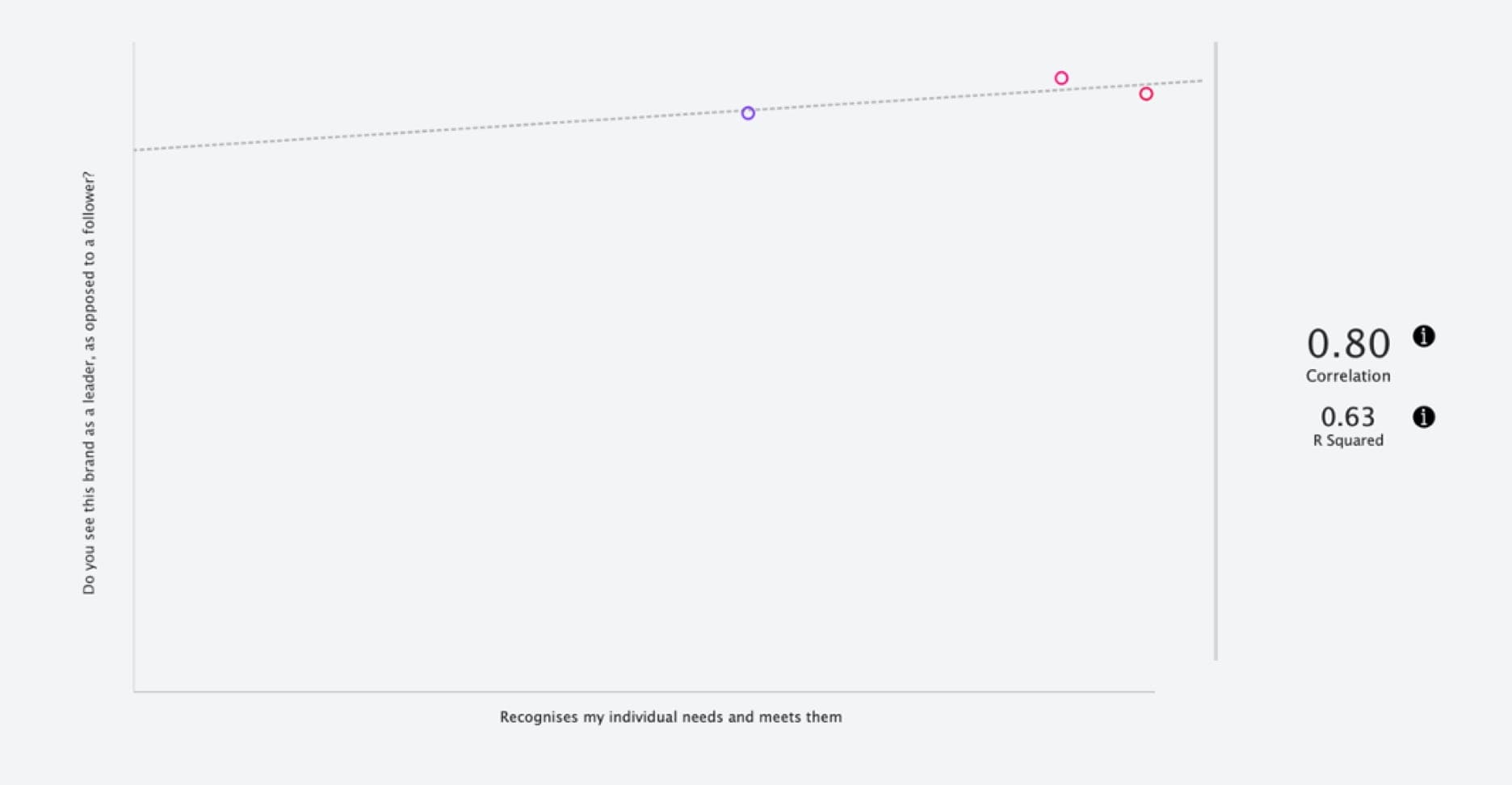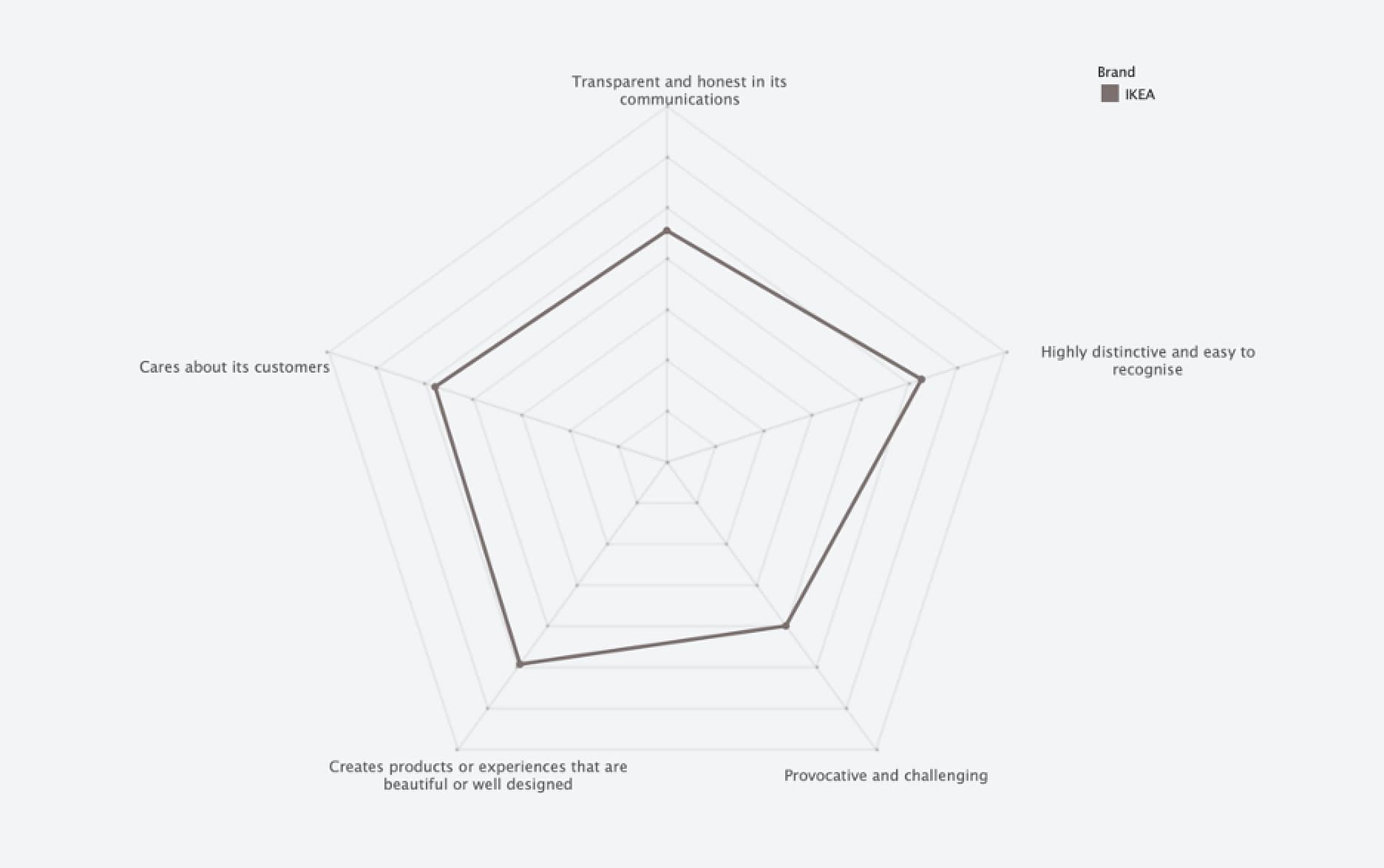Brand loyalty is increasingly divided. We’ve never had so much choice, and it’s never been easier to ditch one brand for another – simply because we feel like it.
It only takes a brief moment of negativity to change brand perception, and as a result, loyalty. People tend to judge an experience based on how they felt at its highest and lowest points, and at its end, rather than as an average of the experience’s duration (this psychological heuristic is known as the “peak-end rule”).
Think about it. When was the last time you felt let down by a brand and at least thought about spending your hard-earned cash elsewhere?
Technology has played a strong role in bringing us more choice, whether we’re shopping on Instagram, buying next day delivery from Amazon Prime, or ordering food to our doorsteps. To guide our decision making, advertising provides us with ‘Unique Selling Points’ (USPs) and ‘Reasons to Believe’ (RTBs), which together form the brand’s promise. As an example, the UK car servicing brand Kwik Fit promises that “You can’t get quicker than a Kwik Fit fitter”. If our experience with Kwik Fit turns out to be slow and arduous, then it’s likely we would look elsewhere next. So, it’s really important that the customer experience we offer delivers on the brand promises we make.
In our recent 2021 Participation Brand Index study, across 50 well-known brands in the US, we asked consumers to score each brand from “Strongly Agree” to “Strongly Disagree” across a series of categorised statements. Interestingly, where consumers most strongly agreed with the statements, “Creates exciting and memorable moments” and “Makes it easy for me to find and buy the products”, they were also far more likely to “always choose” and “pay more” for these same brands.
Our Participation Brand Index data shows a direct correlation between a great customer experience and brand loyalty. Where customers’ “peak-end” experiences were positive, they displayed much higher signals of loyalty in terms of repeat and higher spend. Brands such as IKEA, Adidas, Nike, TK Maxx and Starbucks (who all over indexed for brand loyalty within our Participation Brand Index research) share a common trait – successful fulfilment of their brand promise through their customer experience. Let’s explore this premise in more detail.
One brand who highly over-indexed in this area of our Participation Brand Index research in the US was Starbucks; 39% of consumers stated that Starbucks was a “brand that they always choose”. Despite Starbucks’ huge brick and mortar footprint in the US, there are still many choices when it comes to buying coffee.
Why are consumers choosing to stay loyal to Starbucks?
Firstly, Starbucks has a simple yet structured tiering system which allows customers to redeem a very small reward, such as a syrup or an espresso, after just two transactions. As customers are quickly gratified and become more accustomed to collecting and redeeming, they gradually transition to saving points towards larger rewards, moving through tiers of hot drinks, edibles and eventually non-menu rewards.

Ref 2 - Table showing Starbucks Rewards (US) tiering system.
You might also have noticed that the rewards are Starbucks’ own products, so as a brand, they are able to deliver against their promise without sending customers elsewhere. In other words, the positive experience delivered by redeeming rewards also grows the love the customer has for Starbucks’ own brand and products.
Rewards alone are not enough to drive loyalty, and Starbucks Rewards certainly goes above and beyond simply being a well tiered points programme. Exclusive benefits for downloading the app include birthday treats, coffee and tea refills, the ability to order and pay ahead, “Bonus Star” challenges, “Double star days” and exciting games. Much like the core loyalty rewards, each of these benefits is closely aligned to their brand – and is a well-considered improvement to the customer experience.
In contrast, only 8% of US consumers surveyed responded that they would “always buy” Lululemon, despite their business transformation into a lifestyle brand and the launch of their highly publicised $128 per year limited membership programme across Chicago, Denver and Boulder in 2020.
Whilst Lululemon’s loyalty programme in the US is still fairly new, the data from our Participation Brand Index report suggests that from the pool of consumers we surveyed, the customer experience accessible to their wider audience is not seen to be “exciting”, “memorable” or “easy to purchase” enough to make customers loyal to their brand.
In order to build excitement and drive higher levels of participation, Lululemon should be focusing on building their brand not only as lifestyle, but “for customers, by customers”. This means listening to find out what consumers want, need and love – and then bridging the in-store and online experiences to bring these “WANELOs” to life. Below are two examples of other brands who are doing this right.
TK Maxx (TJ Maxx in the US) have capitalised on their customers’ love of “treasure hunting” to find big brands at low prices, so they have baked this into their online advertising, website and loyalty programme experiences. For shopping repeatedly at TK Maxx, customers can collect “keys” which unlock “treasure” – including exclusive products or experiences only available through TK Maxx.
Nike champion the insight that their customers love to put themselves in the shoes of their favourite pro-athletes. Interactive video content, both in-store and online, gives customers a feeling that they are in the moment of top-level competition, for example on the race track, football field or swimming pool. Aspiration and excitement is delivered through the moments created; all heavily Nike branded and featuring Nike’s latest products.

Ref 1 - Image showing Nike outperforming Lululemon across all five pillars of the Participation Brand Index.
Lululemon’s leisurewear is designed to be stylish and a symbol of casual yet active lifestyle. As such, knowing that social media is a key channel for self-expression, Lululemon might think about creating in-store photo/video booths with backdrops and filters, which could also be emulated on their website and shared on their social channels. Following the latest trends, such as TikTok dances, Lululemon would then be remembered as an exciting and fun social brand who play a role in people’s lives as the activewear of choice for the modern aspiring influencer or socialite.
It remains to be seen whether the exclusivity of the Lululemon’s membership programme (and the annual fee) will attract or deter customer loyalty, however if customers do feel excluded (and feel negative as a result), our Participation Brand Index data suggests that they are unlikely to remain loyal customers for very long, given the increasing availability and magnetism of other brands’ promises.
The best customer experiences are the ones within which customers can actively participate. Whilst rewards will always play a part in motivating transactional loyalty, it is a sense of belonging and appreciation that customers crave from the brands they love.

Ref 3 - Image showing Oliver Wyman’s “Rewards and affinity model” from “The Future of Customer Loyalty” study..
In Oliver Wyman’s study, “The Future of Customer Loyalty”, it’s demonstrated that brands must move beyond rewards into driving affinity. This means we must focus on how we can make customers feel more emotionally connected, rather than viewing loyalty simply as an economic transaction. Coca-Cola is a great example of this – their highly successful, name personalised bottle wrappers where users could “Share a Coke with…” drove huge volumes of sales and customer loyalty, all based around an emotional insight of “shared happniness”. So for best-in-class loyalty programmes, in order to satisfy both our emotional and rational needs, we must consider a mix of recognition and rewards.
At Iris, this is the core of our proprietary approach to loyalty programme design; we build ideas around “recognition” (emotional needs) and “rewards” (rational needs), driving customers from membership joining and interest, through to brand interaction and emotional connection. We’re using this approach to help some of the world’s leading brands to identify territories which are potent both for the brand and for their customers’ motivations and behaviours.
In order to create an experience which customers want to participate in, we must understand how brand empowers choice of lifestyle. Our Participation Brand Index (2021) research ranked leading brands against five core brand pillars: Character, Culture Shaping, Experience Innovation, People Power and Purpose. The brands with the highest aggregated Participation Brand Index scores all excel at empowering lifestyle through being easy, needed and fresh.
Making life that little bit easier can have a profound effect on participation. At the heart of their customer experience, Amazon provides people with personalised recommendations based on previous purchases, suggests relevant products based on what others have bought, serves reviews to simplify the purchase decision and makes it hassle-free for customers to return and buy again. Purchase is fulfilled through easy checkout options, and can even be delivered on the same day. Having an easy customer experience has grown Amazon into the world’s most profitable retailer, racking up $178 billion in profit during the 12-month period leading up to 31 March 2021 (RIS News / wRating: Top 100 Retailers 2021 Edition).

Ref 4 - Image showing Amazon’s Participation Brand Index scores for “Experience Innovation”, which highlights how easy the purchase and after purchase experiences are.
Brands who balance their experience against both rational and emotional needs also drive higher levels of participation. Adidas’ customer experience transcends sports apparel into the role of sports coach. The customer experience is tailored to each customers’ sport of choice, with a deep understanding of customers’ needs to improve and excel. Rational needs are answered through the sports science of Adidas products, whilst emotional needs are addressed through motivational messages. This expert blend of rational and emotional consideration helped Adidas to generate $23.1 billion in global revenue for the 12-month period leading up to 16 September 2020 (Statista 2021).

Ref 5 - Image showing Adidas’ scoring a high correlation between recognising individual needs and perception of strong brand leadership.
Customers love to participate with brands who stay relevant, create trends and drive conversations. In the UK, IKEA’s customer experience has embraced the quirkiness of their Scandinavian design style and stores, and has used this as a unique way of staying fresh within a traditionally ‘matter-of-fact’ home improvement market. Their use of animation and word play brings to life their brand promise of being “For the wonderful everyday”. Every aspect of the customer experience is designed to breathe wonder, fun and excitement into the home improvement experience, helping IKEA to secure a global brand value of $48.1 billion in 2021 (Statista 2021).

Ref 6 - Image showing IKEA’s Participation Brand Index scores for “Character”, which highlights how highly distinctive and beautifully designed their experiences are.
Turning a negative situation into a positive experience is an extremely powerful way to drive future loyalty and brand participation. All businesses face challenges – suppliers, stock, delivery, and so forth. Sometimes the situation is even out of the brand’s control – remember that time when KFC ran out of chicken?
How brands handle these moments with their customers is what counts. Transparency and humility to accept responsibility go a long way, but ultimately, customers really want brands to find a way to deliver on what was promised to them.
Much like human relationships, it hurts when a brand doesn’t keep their promise to you. We take it personally, knowing there are plenty of other brands out there, offering to treat us better.
As a customer, if one brand can’t quickly and consistently meet our expectations, you can bet another brand can, and will. Instant gratification is the fabric we’ve become accustomed too, and there’s no forgiveness – and no going back.